Not going broody is an attribute of factory chickens. Hens don't lay while they sit on eggs. Factory chickens are hatched by incubator machines. So a broody factory chicken is just a waste of space and feed. It has been bred out of them for the most part because a non-brooding chicken produces far more eggs over her productive lifetime.
We do not have a incubator machine and rely on the hens to hatch eggs. Although we were happy with the eggs, the real hope would be that she would lay lots and lots of eggs and still go broody. On a diet of corn. During declining day lengths. Really we should not expect to find a chicken like that.
Last night however, "Red and White" did not jump up on her stick to roost but remained in the nest box. We take any eggs out of the nest box, but we keep three wooden eggs in there just to let the chickens know where they are to put the eggs. And maybe encourage somebody to sit and try to hatch the wooden eggs.
"Red and White" looked like she wanted to hatch those wooden eggs. She has even pulled some feathers out of her chest so that her skin can better warm the eggs. This morning we checked and she was still in the nest box. We made up a broody cage, putting some more wooden eggs in there. Then we moved "Red and White" and the wooden eggs under her to the broody cage.
For a while she just stood there, apparently taking in her new quarters. But after an hour or so, she sat down on the eggs and nosed them in under her to keep them warm.
We have eight real eggs, six are hers, that are no older than a week. We will try to buy a half dozen eggs from ladies in the village to bring the total up to 14. Two other chickens have laid an egg recently. But they do not yet appear to be up to speed. We very much want to reproduce "Red and White", however we don't want to use any eggs much older than seven days. (We have since decided to use more of "Red and Whites" eggs, even up to two weeks old.)
If she is sitting tight on that nest tonight after dark, we will carefully pick her up and replace all her wooden eggs with real fresh eggs. Then we will gently put her back and hope she really is serious about sitting on eggs. (This happened, and she is very tight on those eggs)
Other than this, there is nothing new here. The ducks appear to becoming more and more comfortable here and now venture out from the coop to forage for bugs and grass.
Here the drake is preening his feathers. I did not realize just how fast he was moving his head until I took this picture.
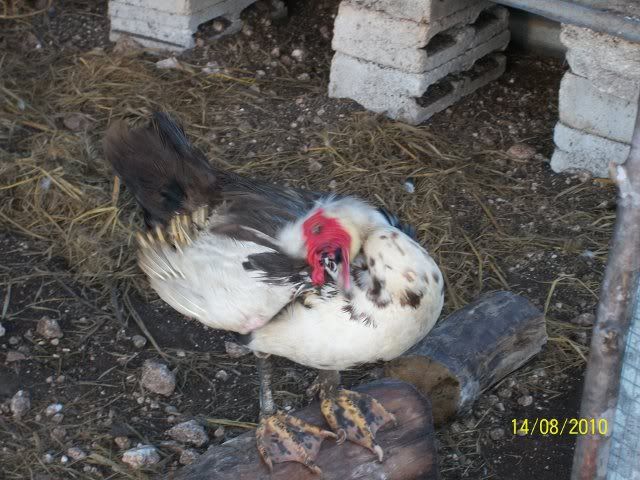
We build piles of grass and put sheep manure on the top of them. These begin to compost or rot and get filled up with earthworms and bugs of all kinds. It is an effort to increase the food resources base for our scavenging chickens. Here the chickens have begun to tear into one of these piles. Apparently it is ready.
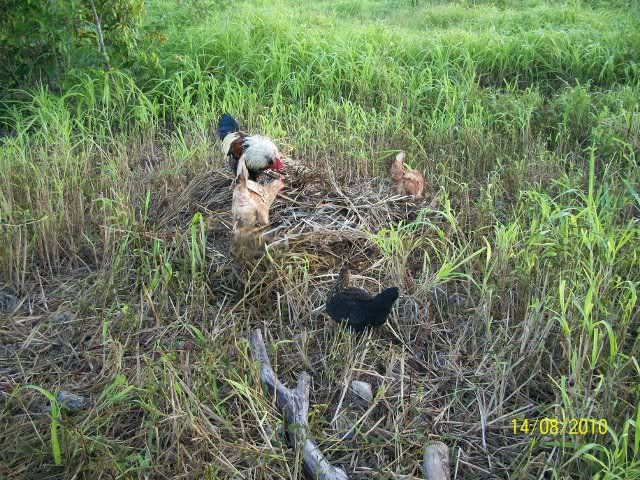
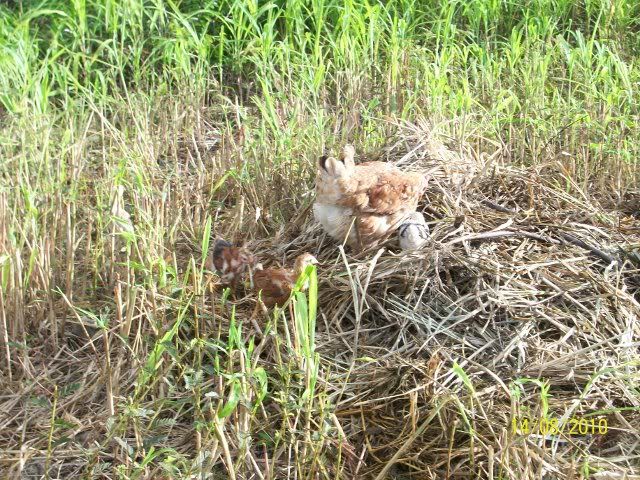
The peeps or little chickens are let loose every morning. They and their mothers spend the day scavenging. The seem to like this. I feed them some corn and some mash before I let them loose. They gobble down some breakfast and then wait impatiently at the door to their cage to be let out.
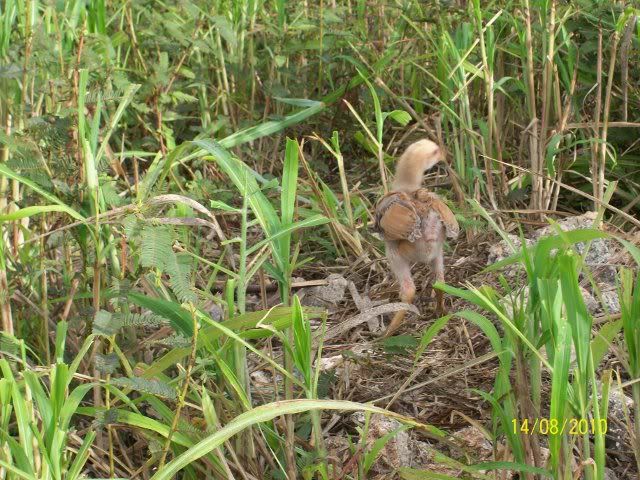
One of our peeps has green feet and legs. I have read about the genetics of this a bit. It is apparently not harmful, and possibly helps the chickens radiate heat from their legs. The local chickens seem to have an amazingly diverse genetic base.
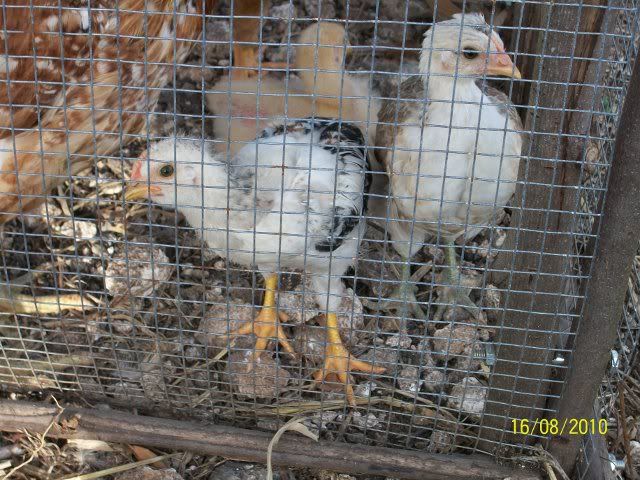
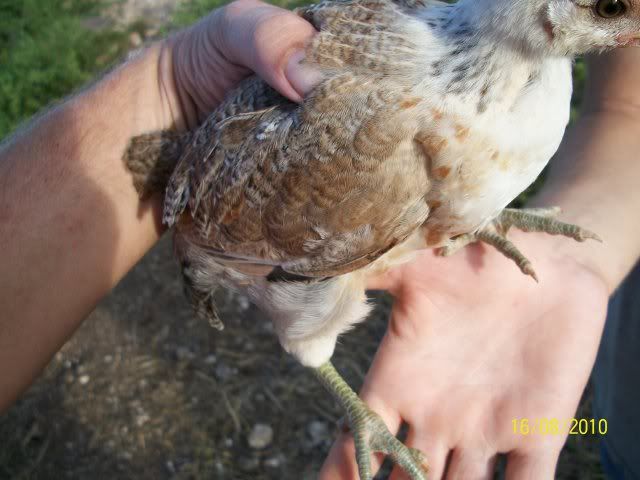
Two of our chicks have only now begun to feather in. These must have the slow feathering gene. One chick still has not feathered and must have the delayed feathering or tardy feathering gene. These are often thought to be beneficial, however we hope to weed out anything other than the normal rapid feathering types.
The high voltage experiments have progressed to a point where our apparatus is capable of producing a half second burst of sparks, every second. Previously we were able to generate a continuous burst of sparks. So this is progress. The goal is to produce one big spark about once every second.
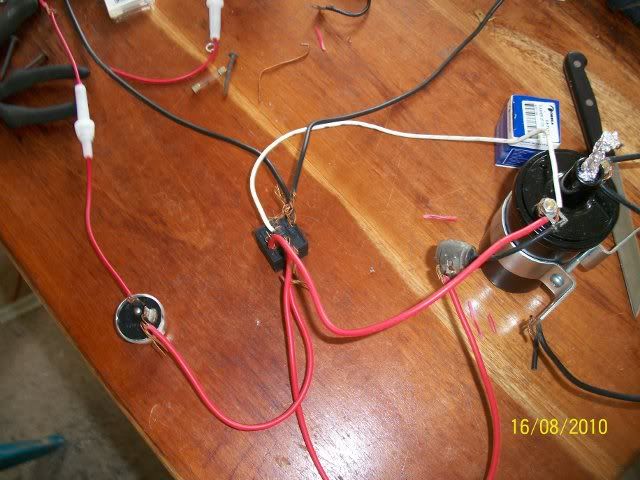
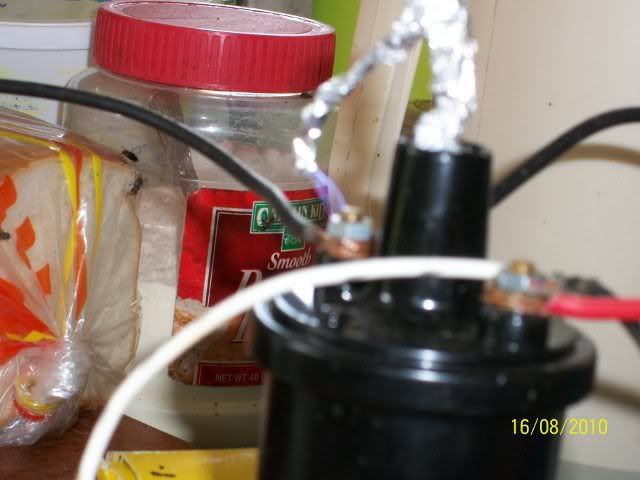
We have discovered that although our power source is a 12 volt DC car battery, our sparks are AC sparks in the range of 20 thousand volts. This is possibly a complication. We had wanted at least the option of charging up a very small home made capacitor or lyden jar to some standard energy level. However if the sparks are AC we can not do this without figuring out some way of rectifying or suppressing the sparks of one polarity or another.
Anywhere, even on the fringes of the developed world, a person would use a cheap diode to do what we want to do. I could maybe tear apart an alternator for low voltage diodes, but a high voltage diode is probably unobtainable here. So I am looking into methods of rectification of electromotive force used in the era of maybe 1880 – 1910. It looks like this might be possible to do with a jar of borax or some such thing. It also looks like the method might have the added feature that when operating the jar will glow. Who knows?
If you read the blog much, you probably know what the ultimate goal of the high voltage experiments are. If you don't know, then suffice to say, we are trying to repair our time machine.
Here is a picture of that duck again.

No comments:
Post a Comment